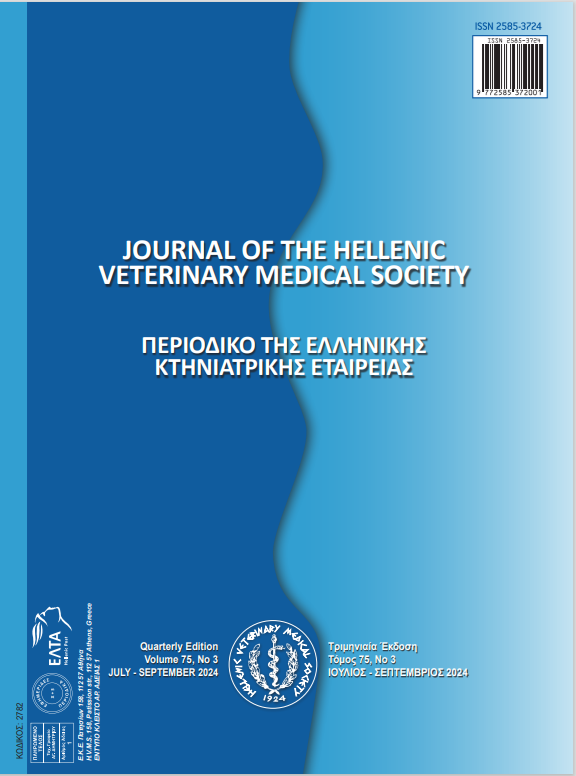Oxidative stress markers in canine parvovirus infection

Abstract
Parvovirus infections are among the deadly viral diseases in dogs and sick puppies. Young dogs are more prone to the virus. Antioxidants are important components of the defense system which prevent cell damage by neutralizing reactive oxygen species. Malondialdehyde is a reliable and commonly used marker of oxidative stress. The present study was performed to determine the role of oxidative stress markers in canine parvovirus disease.
Thirty Cane Corso male dogs with an average age of 3-6 months were enrolled in this study out of which 10 animals were spontaneously infected with the parvovirus and the other 10 were healthy. The activity of superoxide dismutase (SOD), total antioxidant capacity (TAC), and malondialdehyde were measured by colorimetric methods whereas the enzymatic activity of glutathione peroxidase (GPX) was measured. Catalase was measured by means of rapid spectrophotometry and chromography was used for obtaining the concentrations of vitamin D and vitamin E.
The increase in malondialdehyde in infected dogs demonstrates that oxidative stress plays a role in the pathogenesis of the parvovirus. The significant elevation in TAC, and lack of important changes in superoxide dismutase and catalase are indicative of a good response by the antioxidant system against oxidative stress induced by the parvovirus. In conclusion, oxidative stress is involved in the pathogenesis of parvovirus. Thus, strengthening the antioxidant system can be effective in the prevention and treatment of canine parvovirus infection.
Article Details
- How to Cite
-
Khoshvaghti, A., Baziyari Ν., Dehghani, M., & Vaziri, F. (2024). Oxidative stress markers in canine parvovirus infection . Journal of the Hellenic Veterinary Medical Society, 75(3), 7743–7750. https://doi.org/10.12681/jhvms.35205
- Issue
- Vol. 75 No. 3 (2024)
- Section
- Research Articles

This work is licensed under a Creative Commons Attribution-NonCommercial 4.0 International License.
Authors who publish with this journal agree to the following terms:
· Authors retain copyright and grant the journal right of first publication with the work simultaneously licensed under a Creative Commons Attribution Non-Commercial License that allows others to share the work with an acknowledgement of the work's authorship and initial publication in this journal.
· Authors are able to enter into separate, additional contractual arrangements for the non-exclusive distribution of the journal's published version of the work (e.g. post it to an institutional repository or publish it in a book), with an acknowledgement of its initial publication in this journal.
· Authors are permitted and encouraged to post their work online (preferably in institutional repositories or on their website) prior to and during the submission process, as it can lead to productive exchanges, as well as earlier and greater citation of published work.



